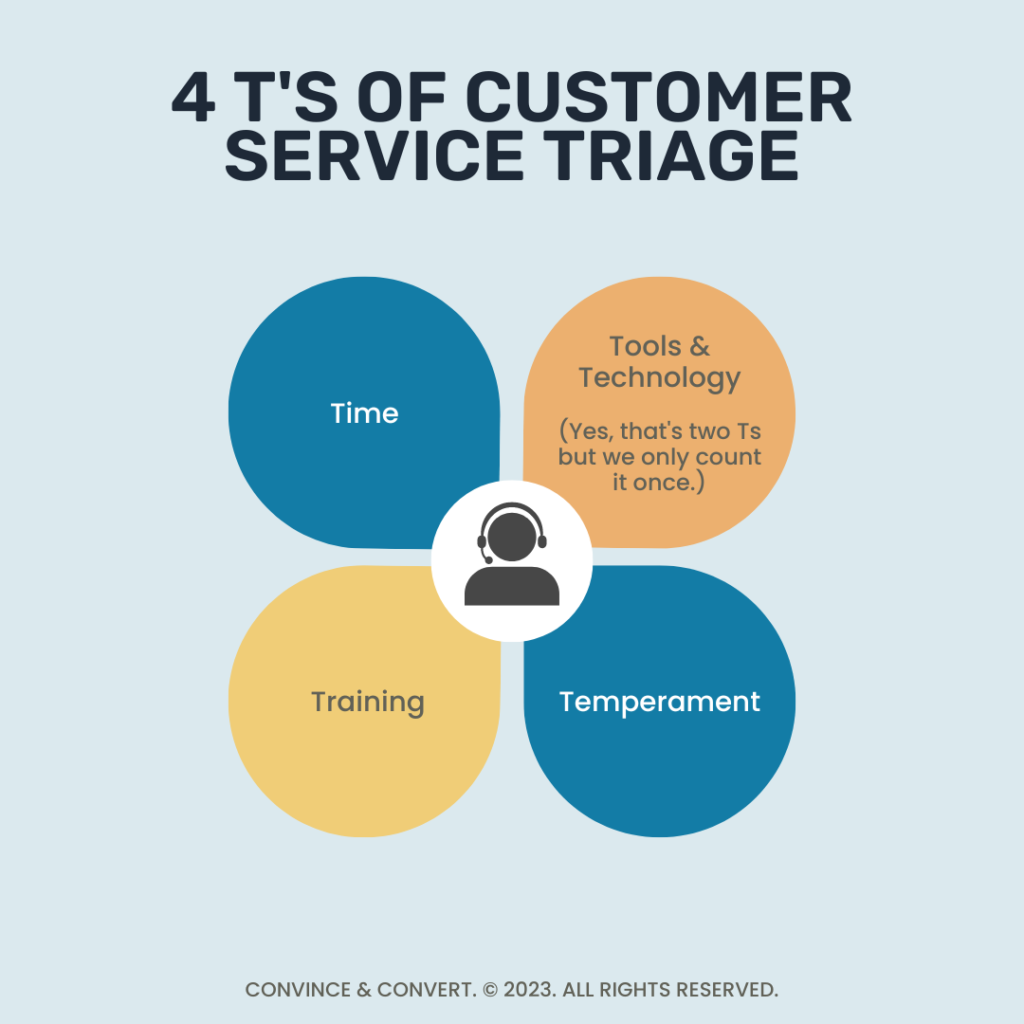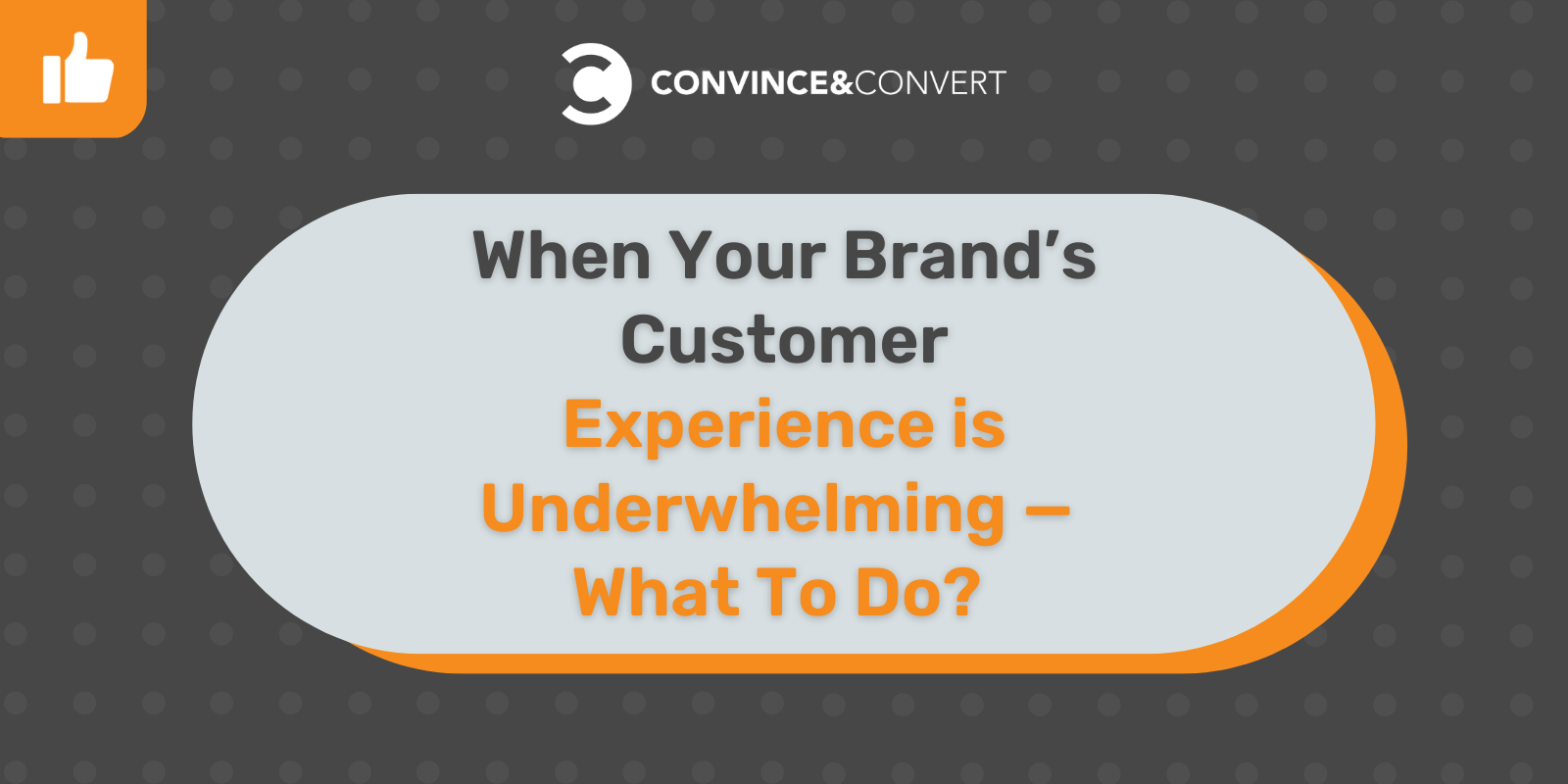Managers are Routinely Unaware of How Customers Actually Rate Their Customer Experience.
It’s a startling fact. We know 80% of organizations believe they deliver a “superior experience” to their customers; however, only 8% of customers feel the same way. We’ve shared the top five most common reasons Why Brands Believe Their CX is Better Than It Really Is and sadly, one or more probably apply to your organization. (Pause and let that sink in.) Whether this is a new revelation to your CX initiatives or a long-known fact, there are steps you must take to turn the CX ship around. And the first step to solving any problem, is to acknowledge it.
Identifying the recurring causes of a poor customer experience are probably something your organization is already tracking. Is that data widely shared with all the teams who can impact change? If not, do it immediately. Every additional customer lost to a poor experience is brand and revenue damage that could likely have been avoided.
80% of organizations believed they delivered a “superior experience” to their customers; however, only 8% of customers felt the same way.
Pro Tip: Quantify your CX performance data and supplement it with anecdotal stories to complete the narrative. Add in the human elements to make the stories more impactful. Share your current state and desired future state — with time frames — to all internal team leaders who touch any aspect of your organization’s customer experience. From this beginning, process improvement plans can be created and implemented.
No organization intends to provide poor customer experience (possible exception is the U.S. Internal Revenue Service) so how and why does it happen? What are the root causes that matter in your situation?
Visit our article and quick self-assessment on the 10 Pillars of Customer Experience Your Customers Care About Most to help you learn and hone in on what is really important to your customers.
Use the Four T’s of Customer Service Triage
Convince & Convert has created processes to help assess and improve organizations’ digital customer experiences. One of the process improvements we developed is the Four T’s of Customer Service Triage. Once you know which areas of the customer experience needs help, use this as a framework to focus on where to implement process improvements and change management. While CX encompasses more than just customer service, it is often the decision point for a customer’s ultimate satisfaction or lack thereof.

#1: Time
Speed is everything. The time to resolution is the most critical factor in preserving a customer relationship. As Jay Baer explains in his top-rated keynote, Time to Win: Grow Your Business by Satisfying Consumers’ Need for Speed, you can pick two of the three: quality, price, or speed and one of them better be speed.
Continually increasing customer expectations confirmed in this proprietary research, this new reality will have you rethinking your own answer to the “how fast is fast enough?” question.
What is the time expectation-to-resolution for your audiences? What sets those expectations? How quickly does your organization respond to an email? Chat inquiry? Wait time on hold? Product returns or exchanges? Social media post? For each channel in which your audiences may voice dissatisfaction, your response time has an outsized impact on the ultimate resolution.
In customer experience, in the minds of your customers, “Rapid Response = We Care”
#2: Tools & Technology
(Yes, that’s 2 T’s but we only counted it once)
We often see customer experiences and customer service hampered by inadequate tools and technology. These tools are force multipliers an organization must use to leverage these key business elements:
- Your personnel
- Data, used for personalization
- Data, used for measurement and reporting
- Response time
- Time to resolution
In your specific circumstance, you have your own set of unique requirements, pain points, and resource constraints. High-volume call centers need very different ticket management software than one person answering the phone for a local plumber. There is a plethora of chat and chatbot management software options that allow vastly different degrees of data capture, CRM integrations, automation, ticket management, data collection and analysis. Your organization may have specific needs regarding legal compliance, medical privacy, finance, or any manner of customer privacy concerns.
This is not the place to begin recommending any particular tool or technology platform to supplement your specific needs within your industry nuances. What is appropriate is to emphasize tools and technology are essential investments intended to yield a return over time. But just owning a tool does not make one a skilled carpenter. The tools need to be used with skill and precision. And that leads us to…
#3: Training
In your organization, who is responsible for providing exceptional customer experiences? (Pause, really answer the question before reading further.)
The correct answer is everyone! Anyone who touches the product or service you deliver, anyone involved in the messaging and communications with your audiences, anyone involved in fulfillment or customer care, they all need to be trained on how to deliver exceptional customer experiences.
The reality is, most of the people in your organization have had little to zero training in customer service or what it even means to deliver exceptional customer experiences. Sure, they are all committed to doing a good job, but how can they do a great job? How can they surprise and delight? What cross-functional process changes could be made to streamline and accelerate progress to higher customer satisfaction, retention, and revenue? These are not net-zero decisions. Teach, assess, refine, and improve at each critical point in the customer journey. Then do the same at each non-critical point too.
Pro Tip: Begin with a broad-reaching internal survey/quiz to assess what level your customer experience team (almost everyone) scores on a variety of customer experience scenarios and solutions. No need for trick questions but get a real understanding of the current state of employee confidence, individual empowerment to “fix” an issue, the internal hierarchy of your organization, and their points of friction in getting to rapid resolutions and exceptional customer experiences. The results may surprise you. If you’d like Convince & Convert to help you implement such an internal assessment, drop us a note.
#4: Temperament
I have great empathy for anyone who works or has worked in a customer service call center. Or been a food server. Airline ticket agent. Or dealt with the public in general. The public can be (is):
- Brutal
- Overbearing
- Rude
- Frustrated
- Incorrect
- Ignorant (different than incorrect)
- Demanding
- Unreasonable
- Loud (yelling)
- Oblivious to the role the CS person can or cannot fulfill
- Appreciative of your assistance
I admit, I have at a few times in my adulthood been guilty of most of these. And if you are honest with yourself, you may have as well.
The point here is that not everyone is wired to deal with such drama. Granted, we’ve all encountered CS professionals who are dang good at their job and truly improve the customer experience. And that must be some combination of training, company culture, and personal temperament. Excellent customer service requires an inherent empathy for the customer and genuine desire to help.
“Excellent customer service requires an inherent empathy for the customer and genuine desire to help.”
These are the individuals you must value most and use as examples for others to follow and mimic. If you have one, or a bunch of them, good! Figure out how to replicate that. If you don’t have that in your organization, something must change. Yes, George may have been employed there for 20 years, but if he is gruff on the phone and abrasive to everyone, it’s time to change.
Flight or Fight? Do This Next:
If you really feel your organization’s customer experience cannot be salvaged, do this:
- Update your resumé and up your professional networking game. Reach out and make new connections and start to work those for new employment opportunities. If your organization’s CX/CS problems are systemic and you are not able or willing to implement change, look for a more comfortable workplace.
If you really feel your organization’s customer experience can be salvaged, do this:
- Refer back to this article on the 10 Pillars of Customer Experience Your Customers Care About Most and determine where your most important pillars are. (To-do steps are at the end of the article.)
- Overlay the four T’s for CX/CS Triage from above across your most important pillars.
- Create internal visibility, awareness, and understanding of what specific areas need to be improved first and get buy-in from every potential stakeholder who will be involved in the process.
- Get outside assistance. If your issues could have been solved internally, they probably already would have been. Outside guidance, awareness of the latest tools and technology, training workshops, help implementing change-management, unbiased perspective, these are all good examples where it is not only ok, but also smart, to solicit some professional assistance.
Pro Tip: The steps in this article are clearly reactionary to your current state. They do not address a new look at surprise and delight, Talk Triggers (infographic), or our Ultimate Guide to Customer Experience. We have knowledge to share. Learn and share with your colleagues.
If you have thoughts, questions, or ideas to share, we are here to help. We always enjoy the conversation.
Check out our entire CX series.
Part 1: The Two CXs You Have to Deal With — Customer Experience vs Customer Expectations
Part 2: The Audience Experience is More Important than Customer Experience
Part 3: Why Brands Believe Their CX is Better Than It Really Is
Part 4: Great Customer Experience Starts with Great Employee Experience




